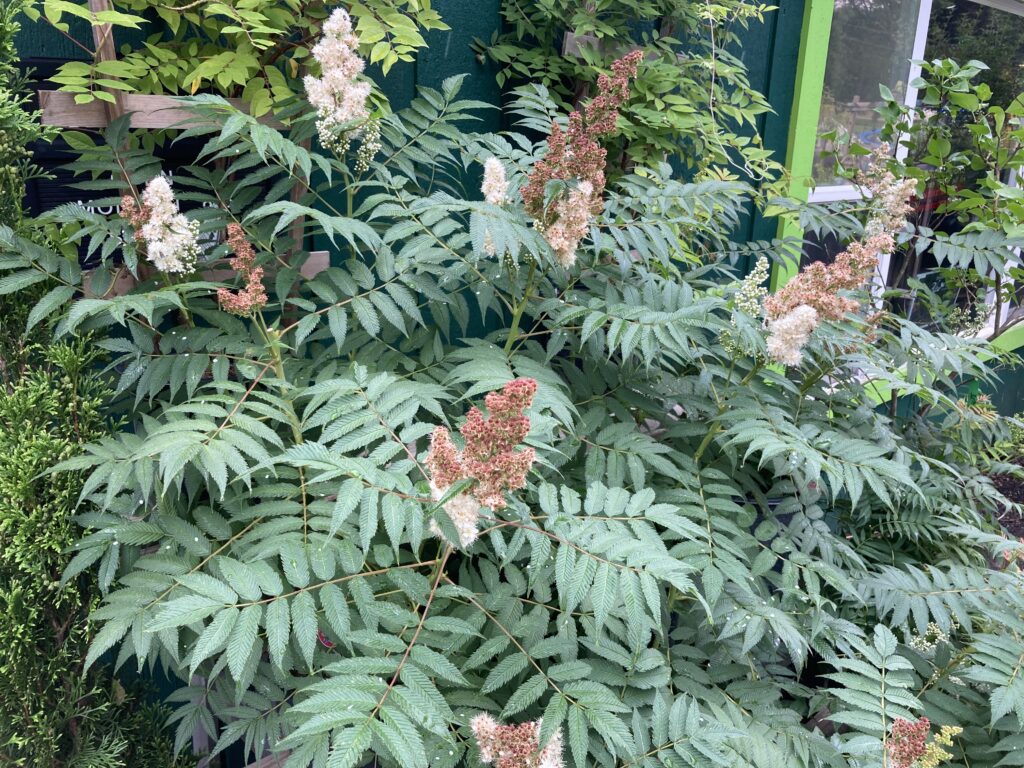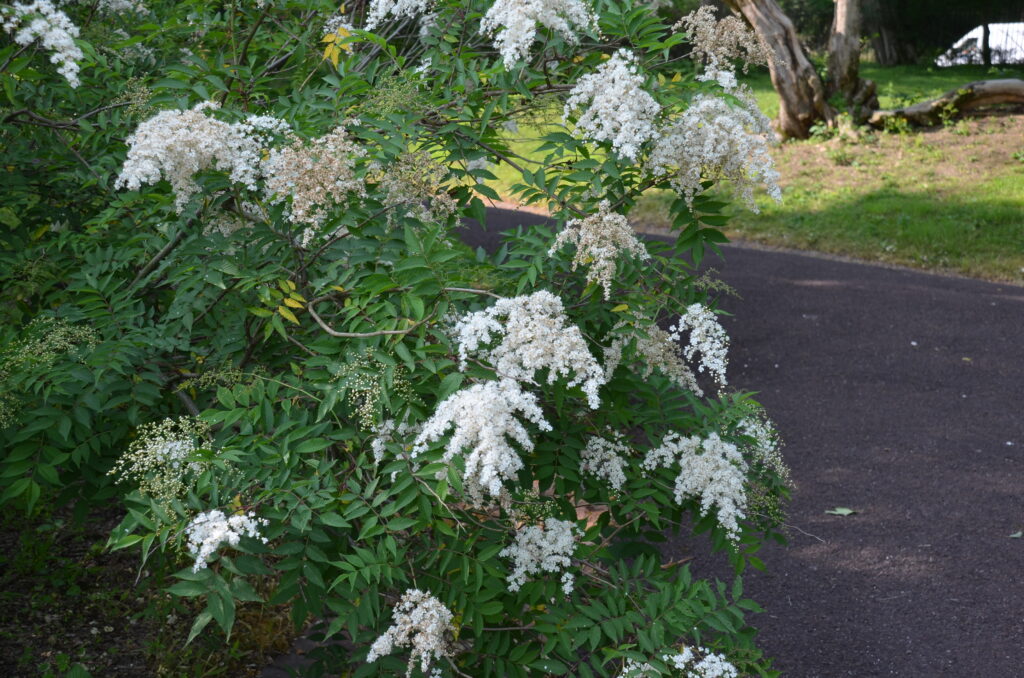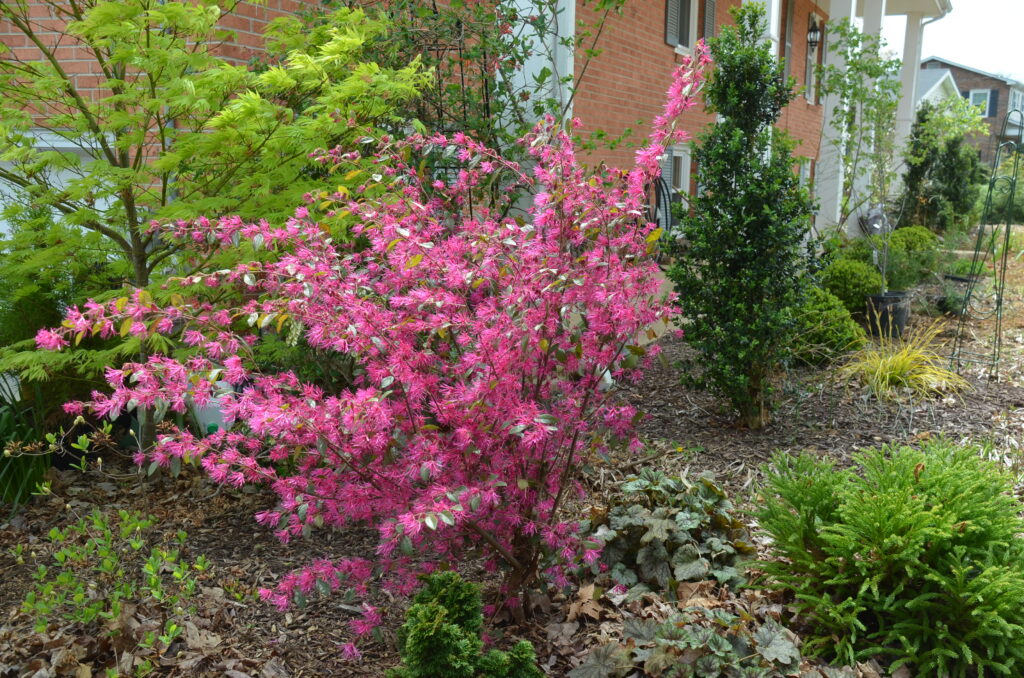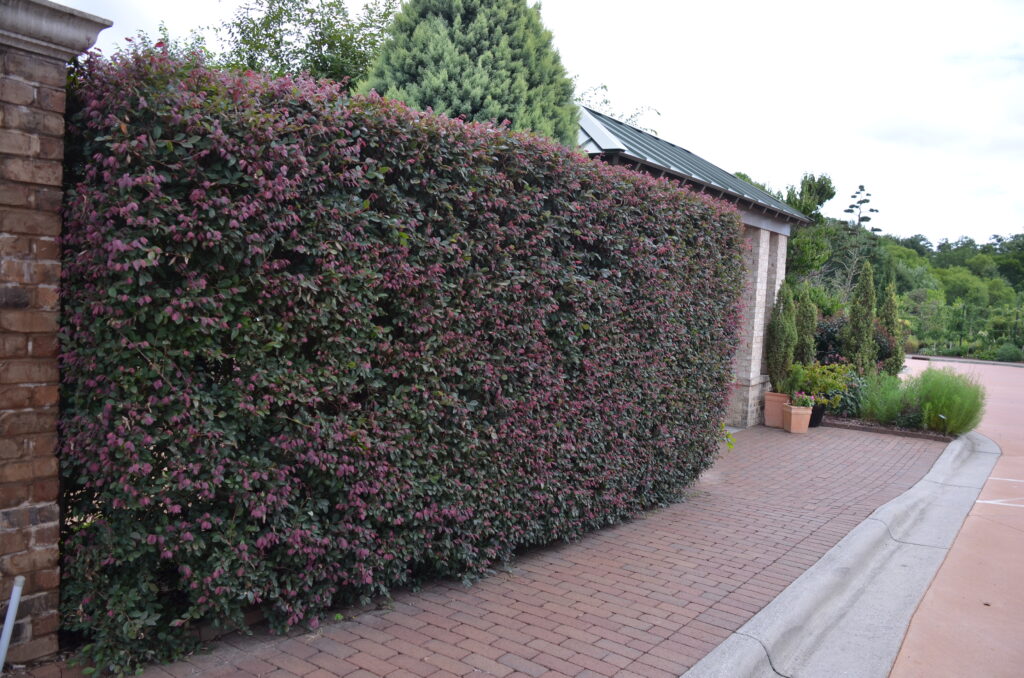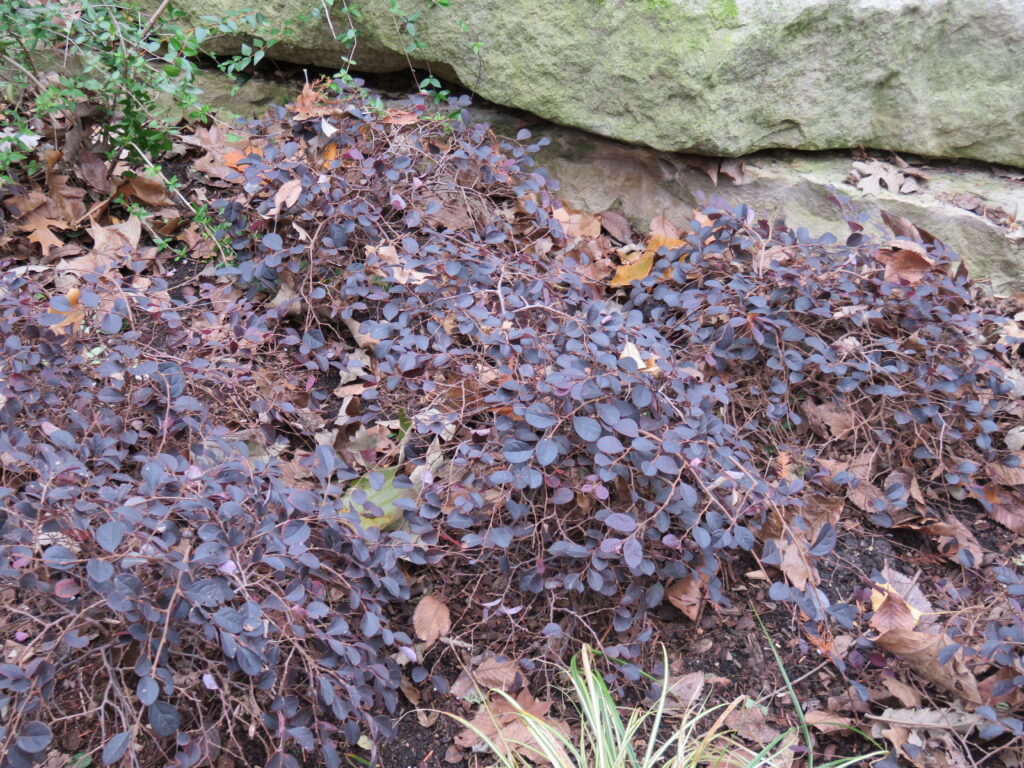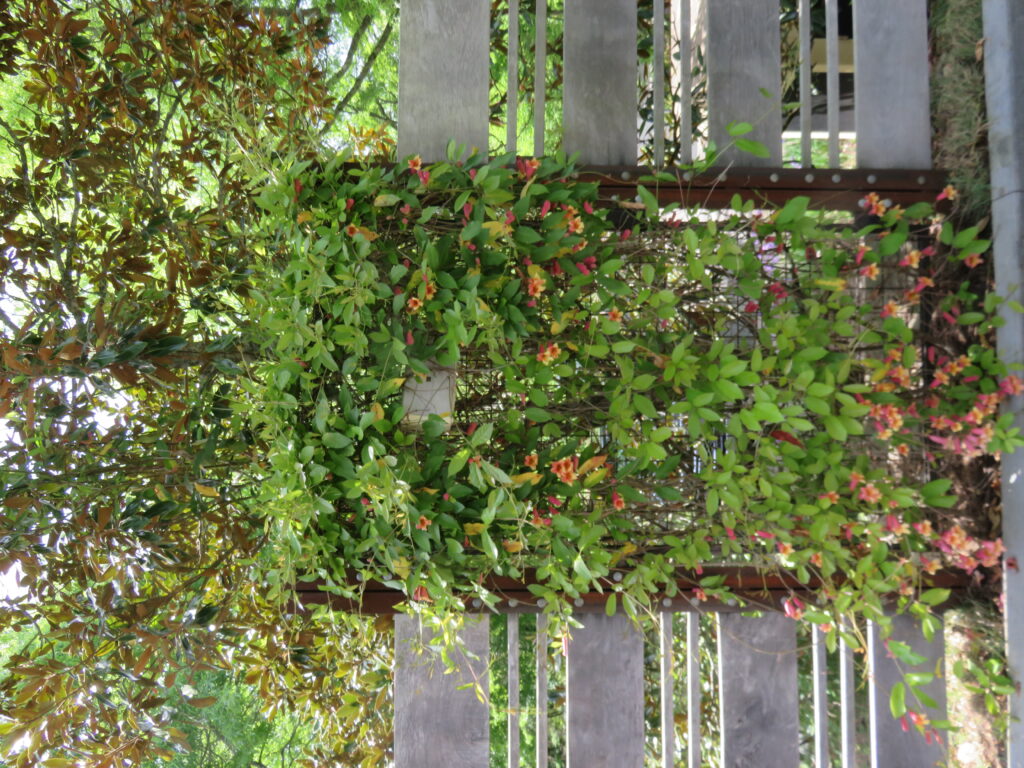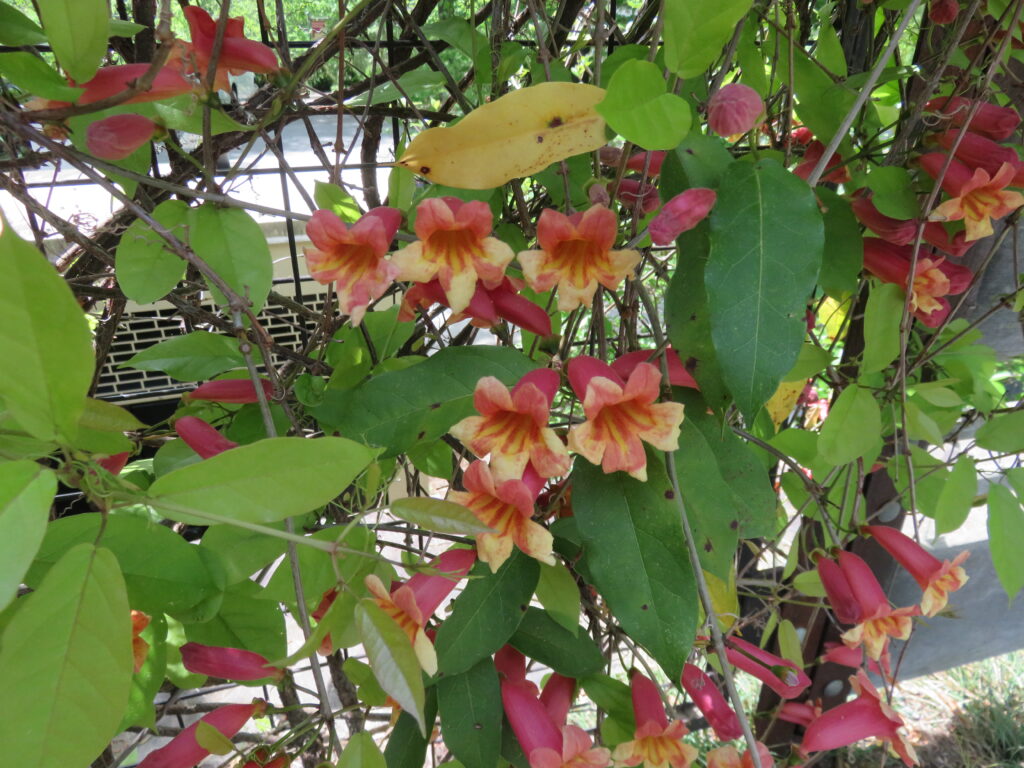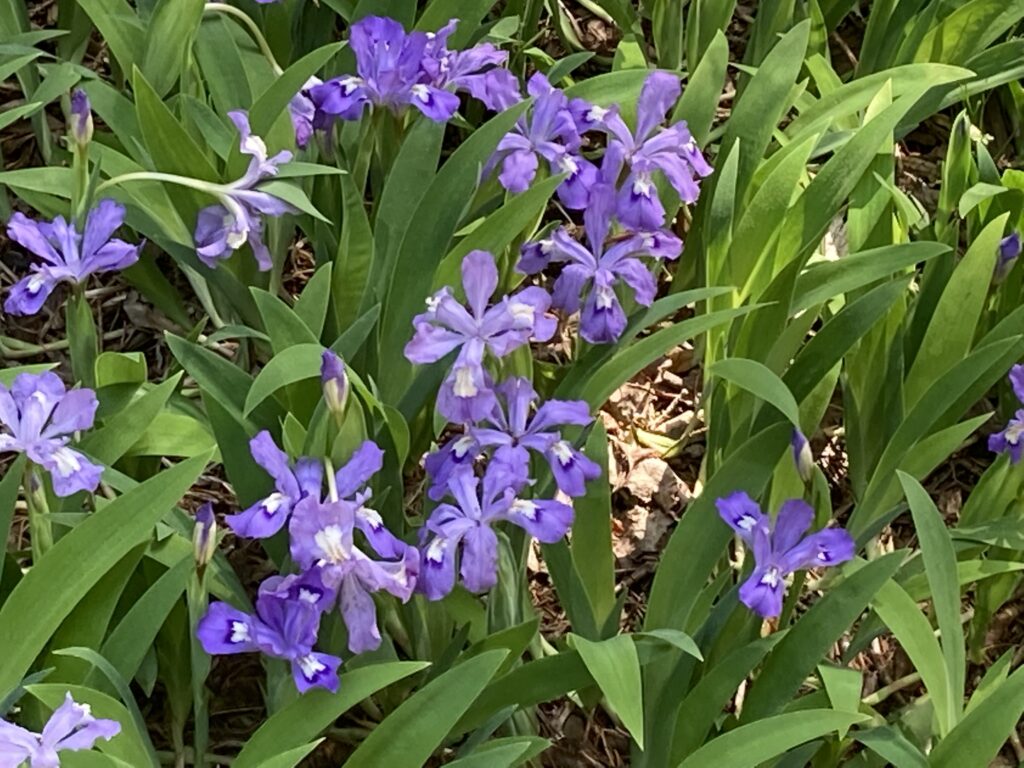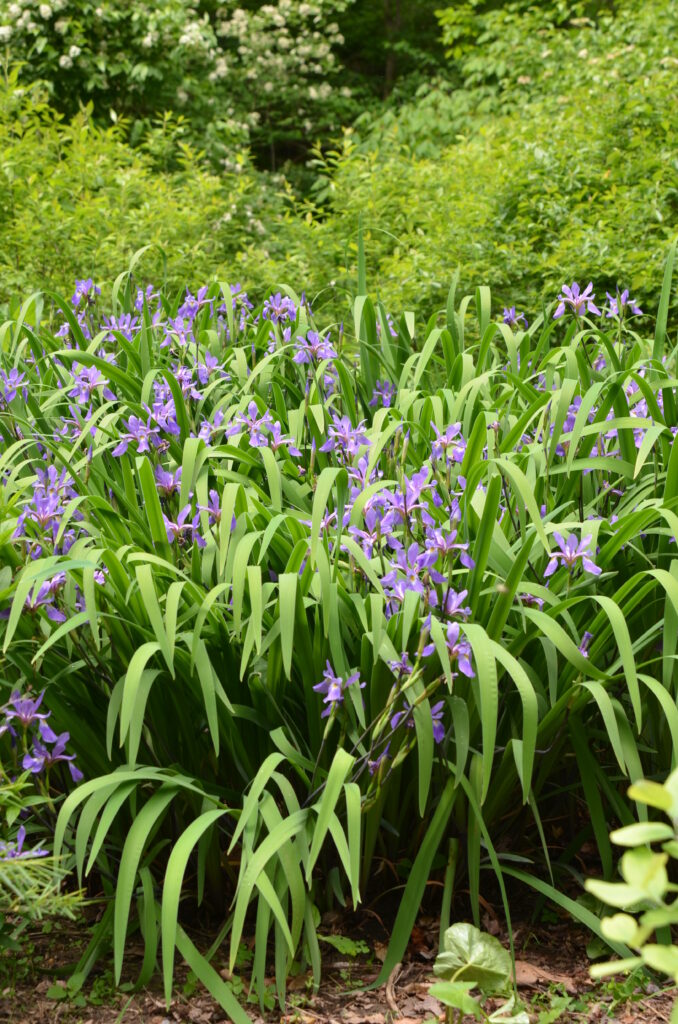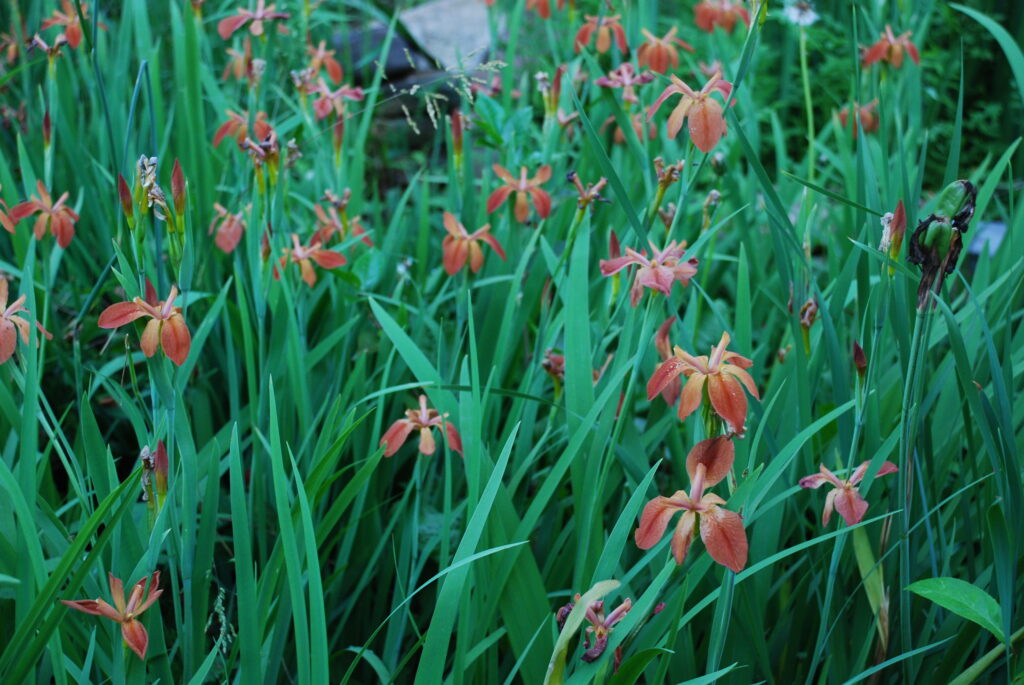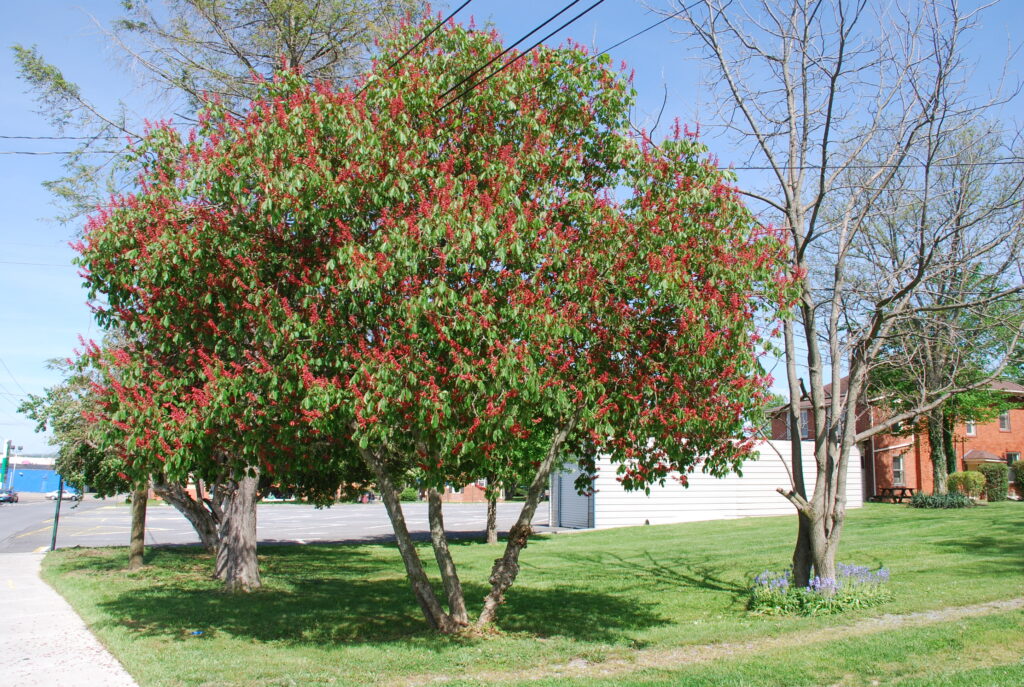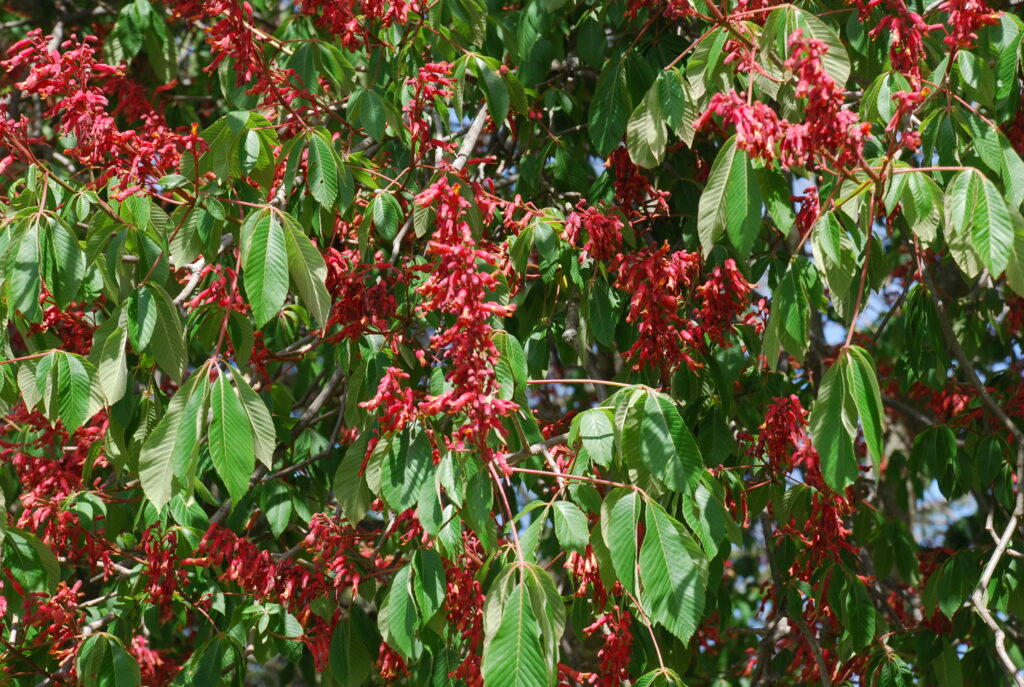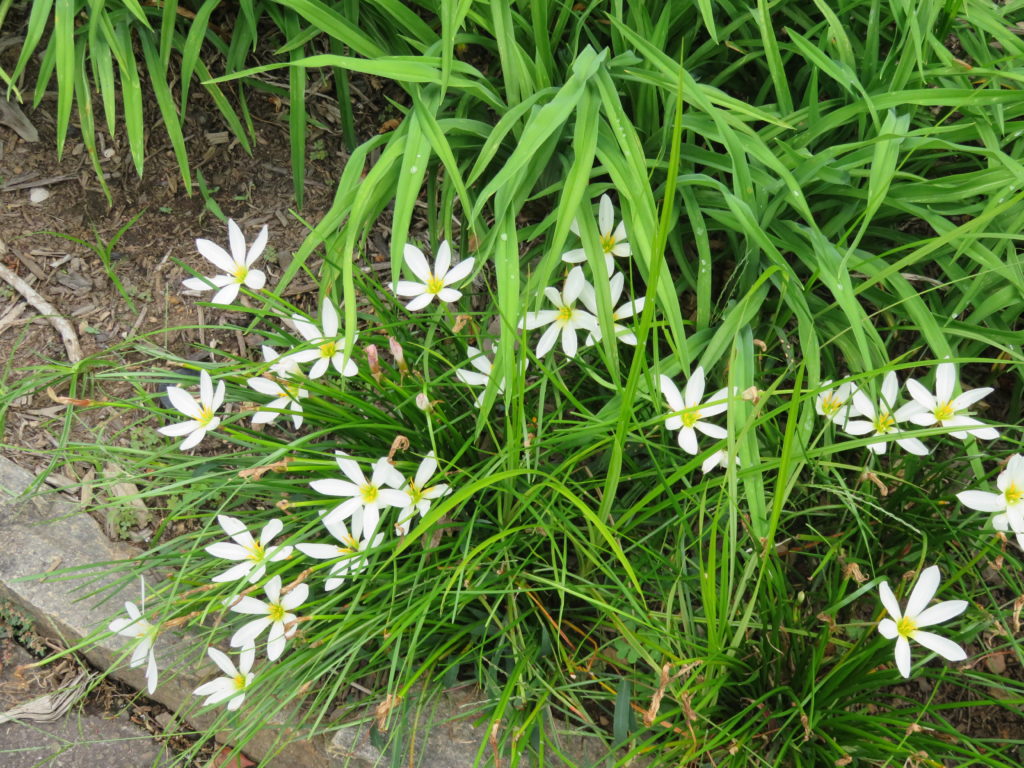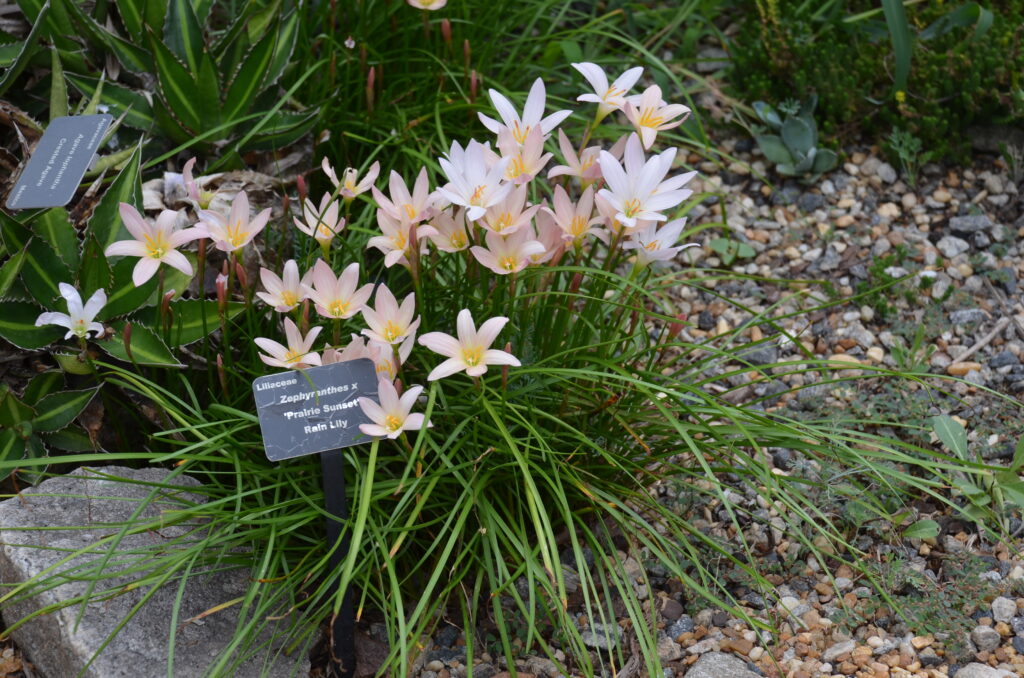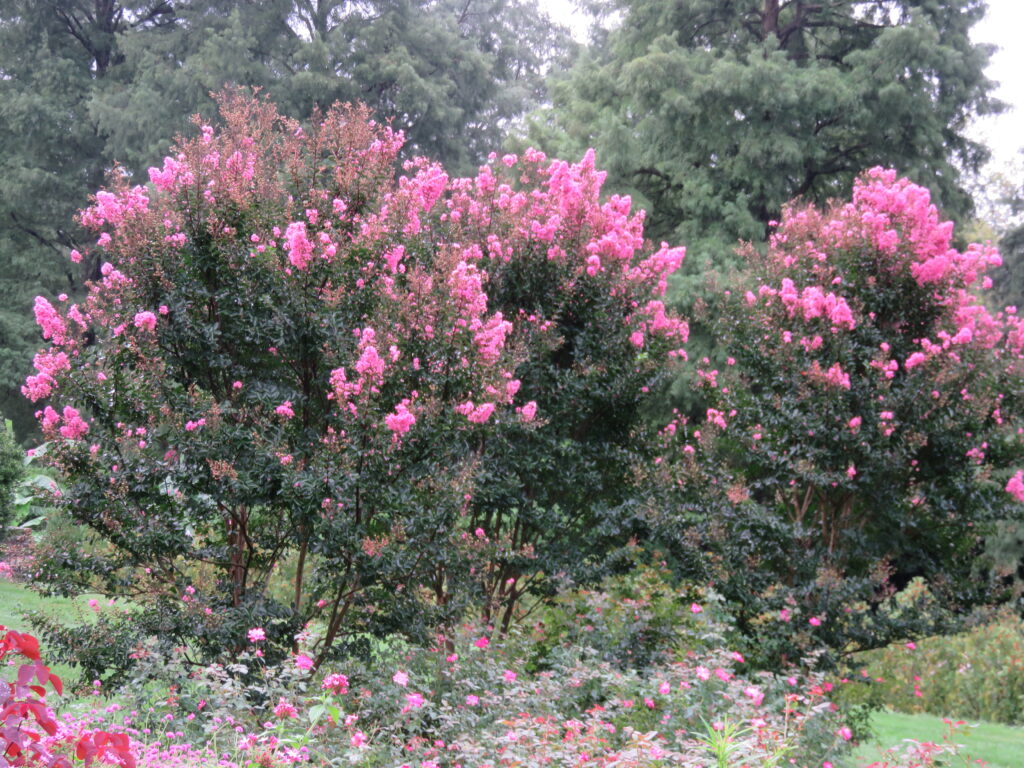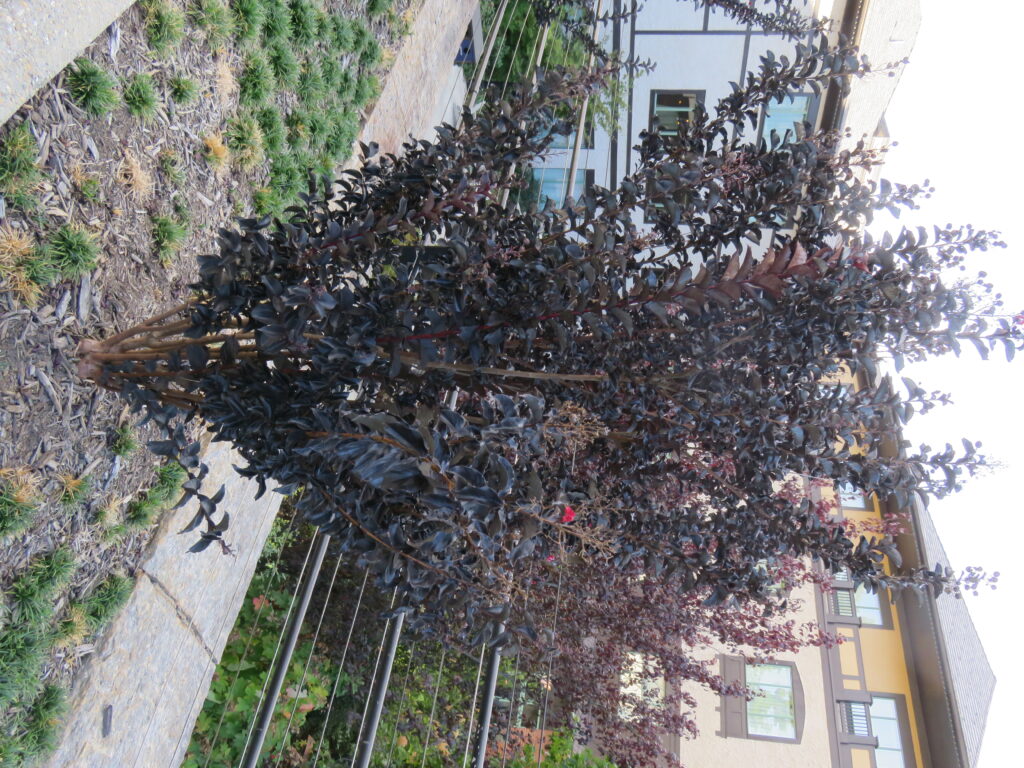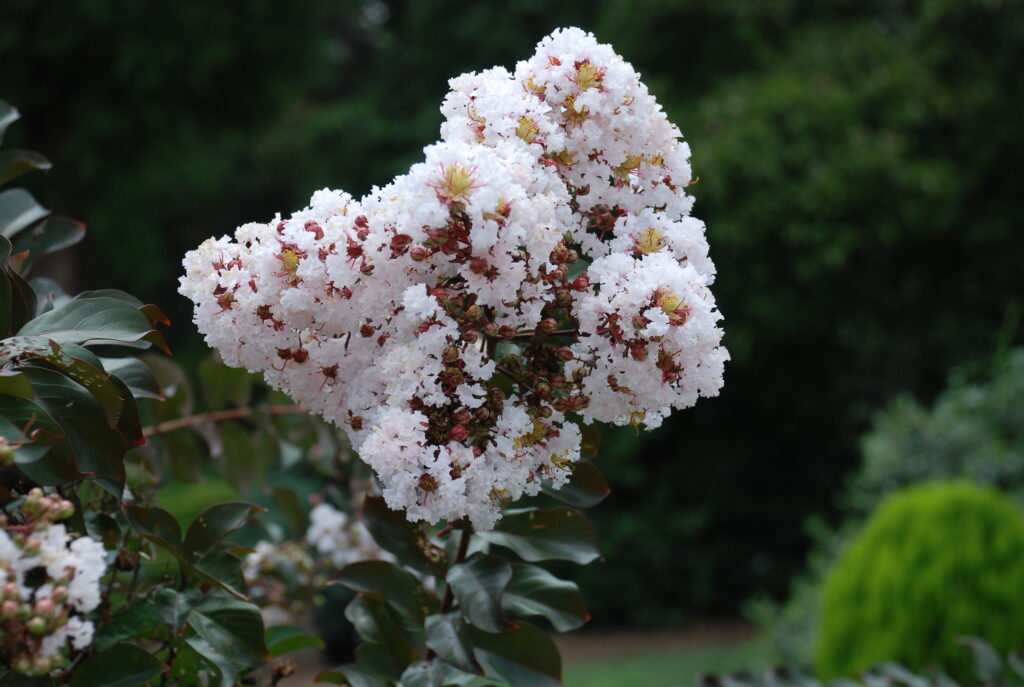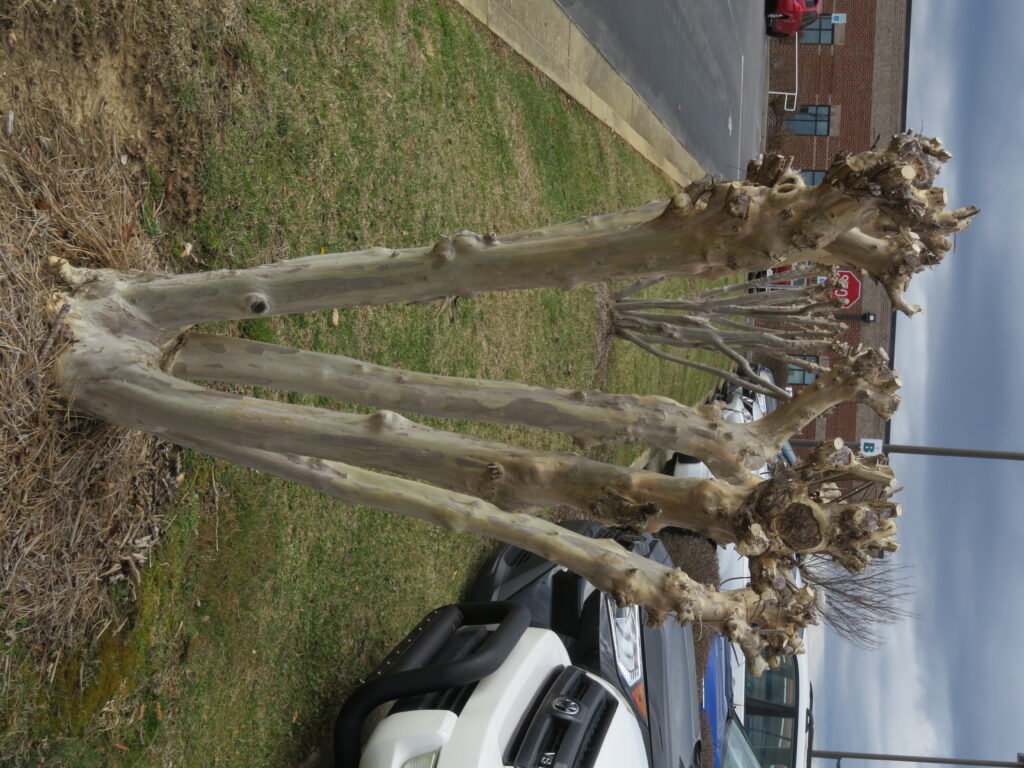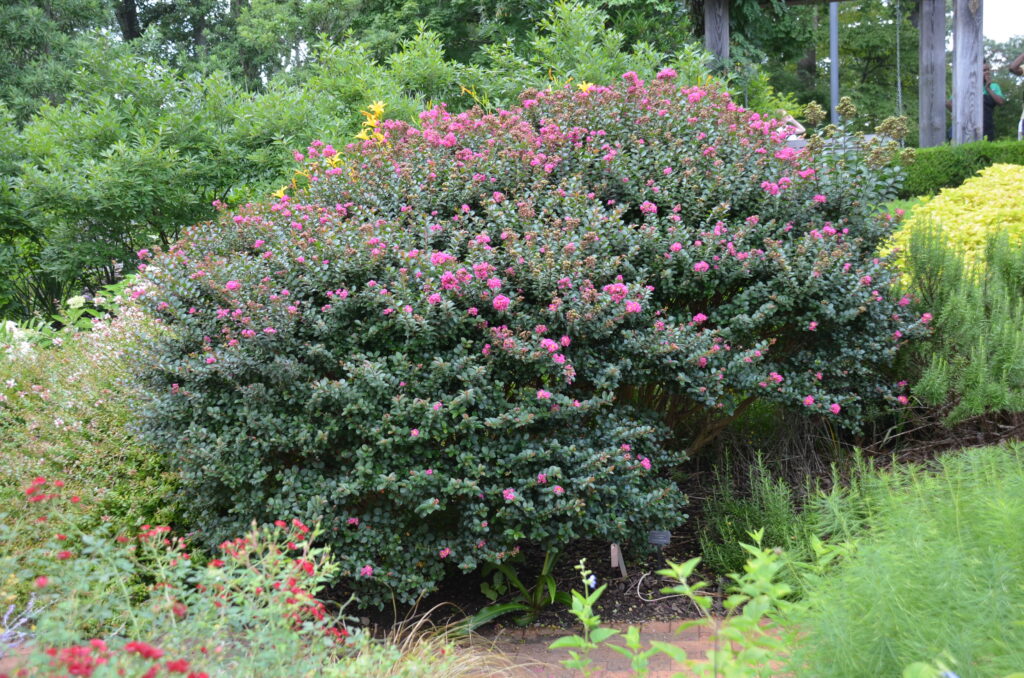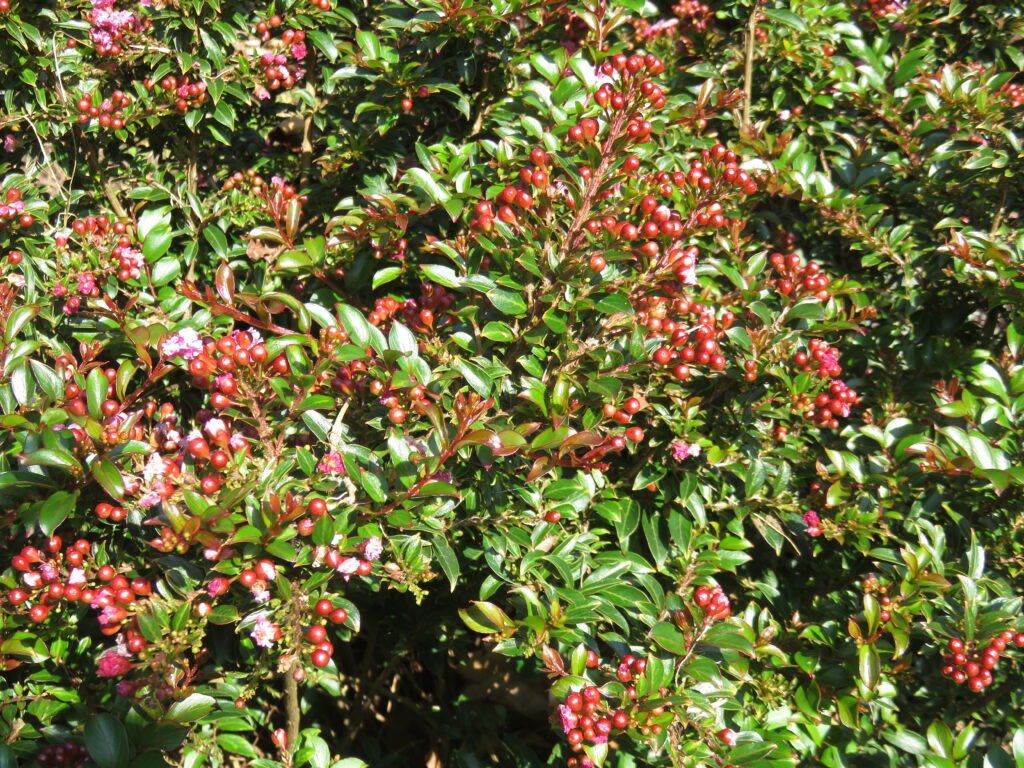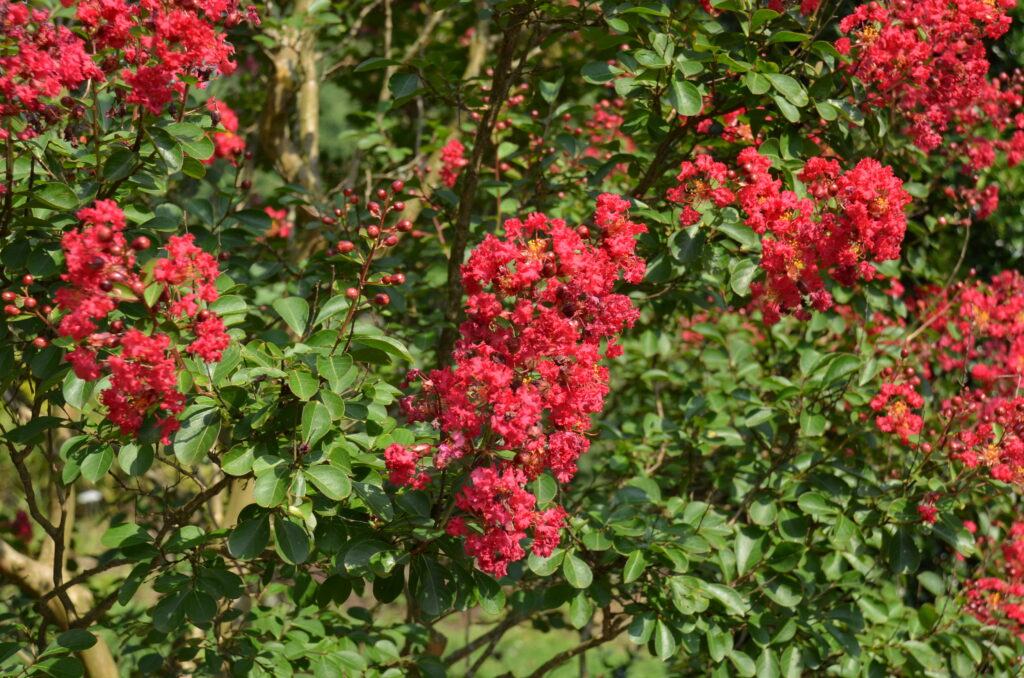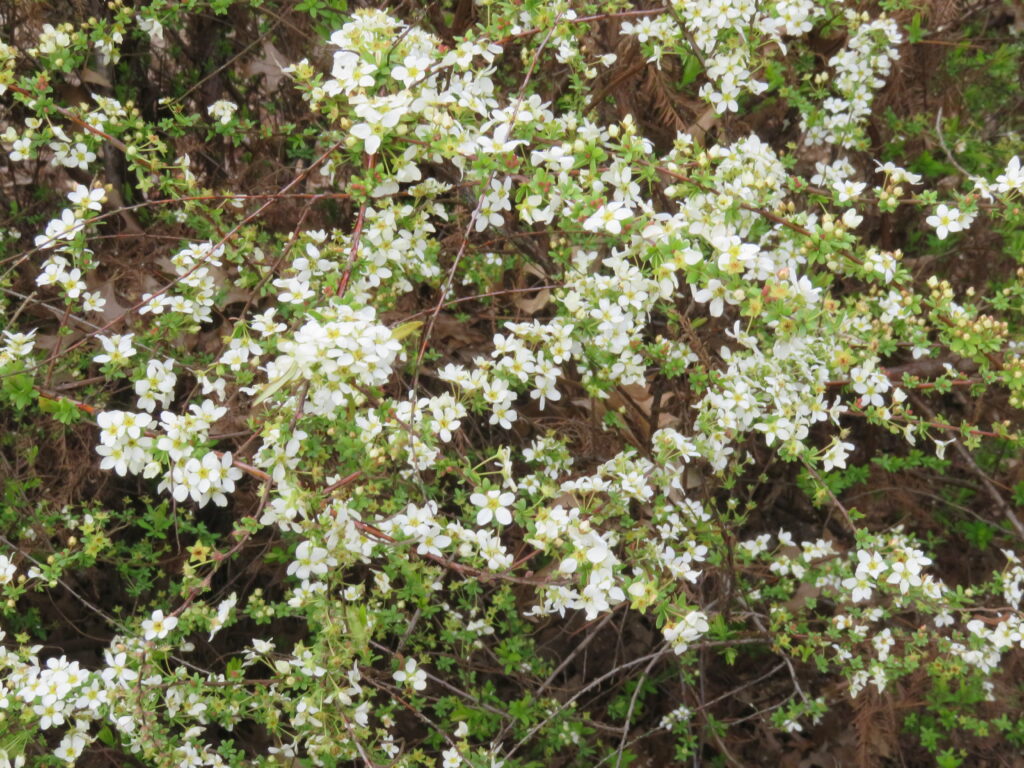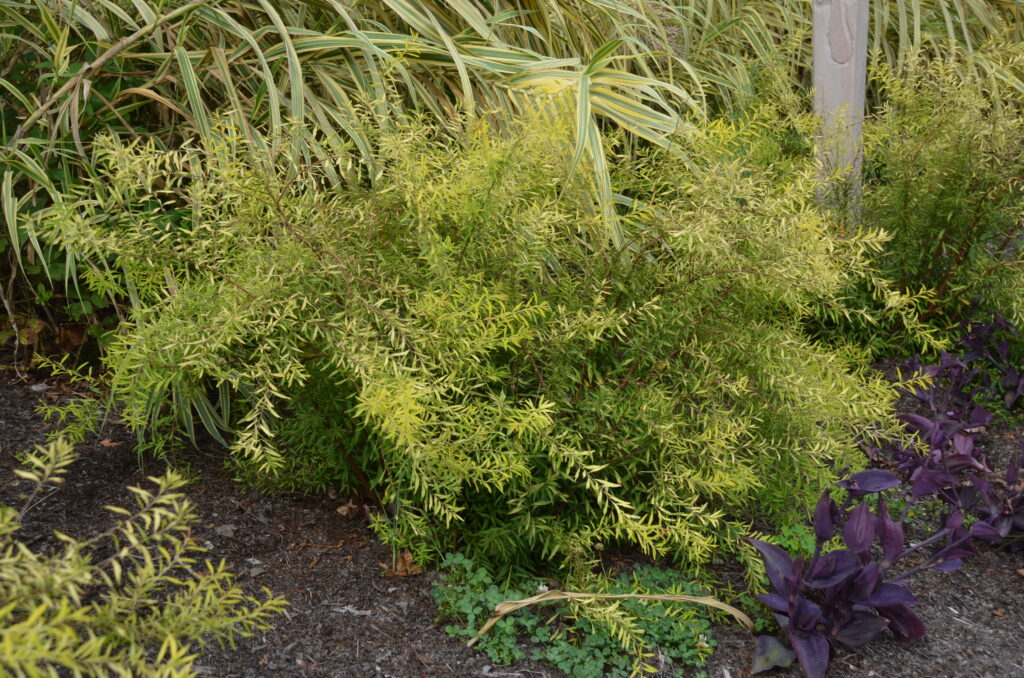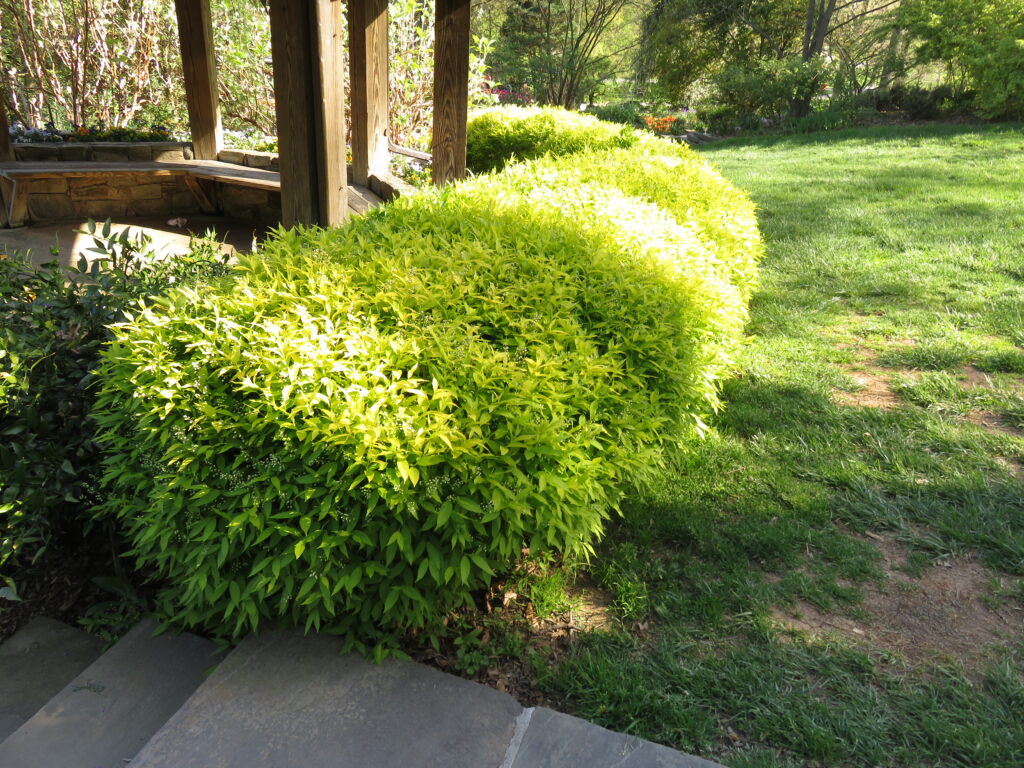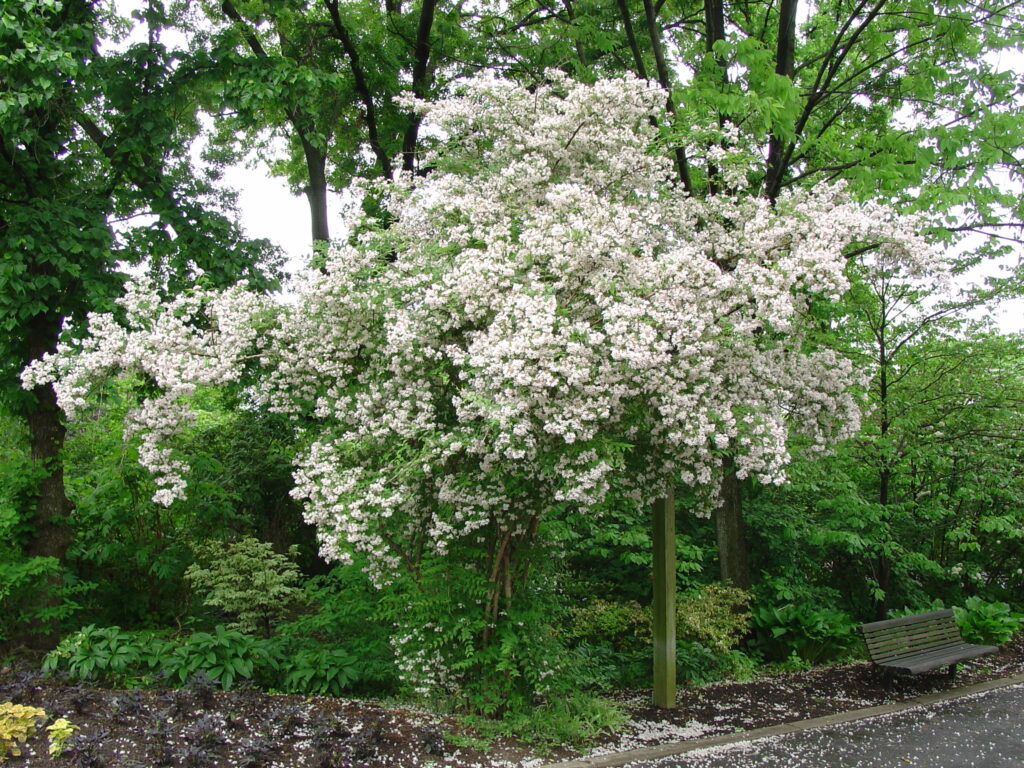
Beauty Bush (Kolkwitzia amabilis) is closely related to two other flowering shrubs – Weigela and Diervilla – and belong in the honeysuckle family (USDA hardiness zones 4-8). It is primarily grown for its outstanding spring flowering in May. This deciduous shrub grows 6-10 feet tall with an arching, vase-shaped shrub habit.
Beauty Bush is an old-fashioned shrub planted medium back in the border. Lovely clusters of bell-shaped, pink flowers with yellow throats fill the branches. Flowers are followed by insignificant capsule-like fruits that persist through most of the summer. Its dark green leaves, mostly 3 inches in length, are arranged opposite on the stem. Foliage turns an undistinguished yellow in fall. See cultivar list below.
Flowering begins in May that may extend into early June if temps stay cool. Blossoms are borne in clusters along the stems. Following its May bloom cycle, beauty bush offers little in the way of ornamental appeal the remainder of the season. The shrub offers dark green, blemish-free foliage. As the branch wood ages, the bark peels and eventually exfoliates, perhaps offering some winter interest.
Beauty Bush is a reliable flowering shrub that thrives in average well-drained soils in full to partial sun (4+ hours sun for best flowering). Over the years this vigorous grower tends to become dense and overgrown that may necessitate cutting it back to the ground. Plant blooms on old wood, so enjoy the spring flower display and prune twiggy growth immediately after. Renewal pruning of an old beauty bush is best done in late winter which results in loss of spring flowering.
Beauty Bush makes an excellent flowering hedge, home foundation plant, and reliable landscape plant.
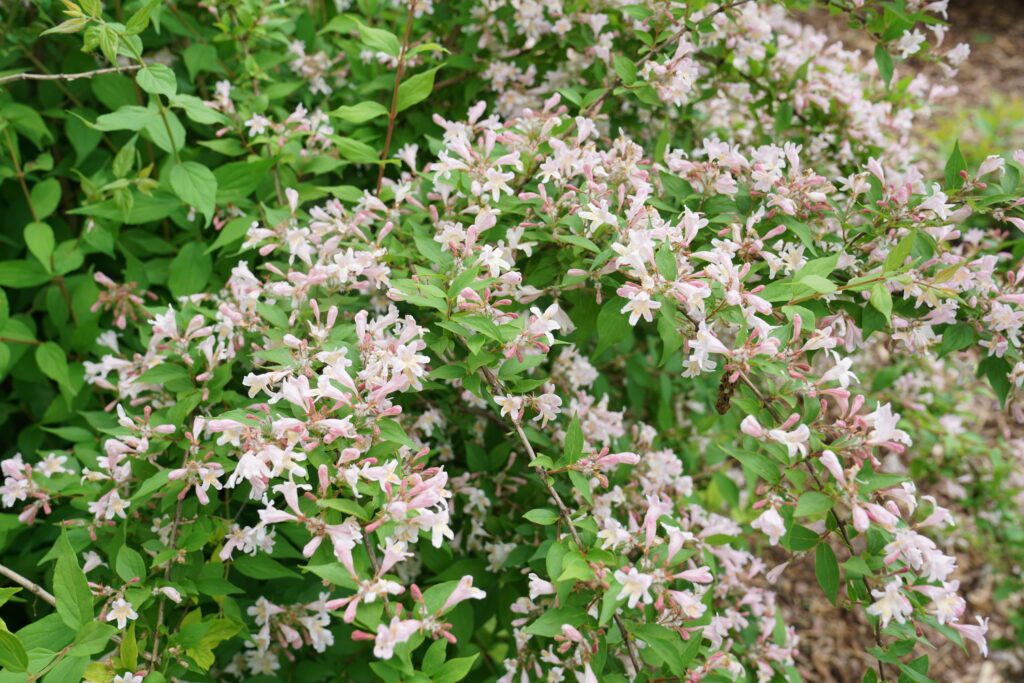
Cultivars:
Jolene Jolene™ is a dwarf introduction from Proven Winners, 3-6 feet tall and 4-6 feet wide, and fits into many more residential landscapes and small yards. Star-shaped pink flowers with a bright yellow throat emerge in early May.
DREAM CATCHER (‘Maradco’) grows 6-9 feet high and wide with 3 inch long leaves with copper tones in earlyspring; leaves turn yellow by May bloom time, golden-chartreuse in summer, and turn orange and gold in fall.
‘Pink Cloud’ is an old Wisley Garden introduction in the late 1940s with dense vigorous growth, 6-9 feet high and 5 feet wide.

